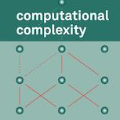In addition to being extremely non-linear, modern problems require millions if not billions of parameters to solve or at least to get a good approximation of the solution, and neural networks are known to assimilate that complexity by deepening and widening their topology in order to increase the level of non-linearity needed for a better approximation. However, compact topologies are always preferred to deeper ones as they offer the advantage of using less computational units and less parameters. This compacity comes at the price of reduced non-linearity and thus, of limited solution search space. We propose the 1-Dimensional Polynomial Neural Network (1DPNN) model that uses automatic polynomial kernel estimation for 1-Dimensional Convolutional Neural Networks (1DCNNs) and that introduces a high degree of non-linearity from the first layer which can compensate the need for deep and/or wide topologies. We show that this non-linearity introduces more computational complexity but enables the model to yield better results than a regular 1DCNN that has the same number of training parameters on various classification and regression problems related to audio signals. The experiments were conducted on three publicly available datasets and demonstrate that the proposed model can achieve a much faster convergence than a 1DCNN on the tackled regression problems.
翻译:除了极端非线性之外,现代问题还需要数以百万计(如果不是数十亿)的参数才能解决,或者至少能够很好地接近解决方案,神经网络通过深化和扩大其表层来吸收这一复杂性,从而增加更好接近所需的非线性水平;但是,由于使用较少的计算单位和较少的参数的好处,紧凑的表层总是偏向于更深的表层;这种不直线性是以较少的非线性为代价的,因而是有限的解决方案搜索空间。我们建议采用1-Dimentional多边神经网络(DPNN)模型,对1-Dional-Concial Neural网络(DCNN)使用自动多核内核内核估计来消化这一复杂性,以便提高更接近所需的非线性水平;然而,从第一个层来看,这种不直线性总是偏重,可以弥补对深度和(或)宽度的表层的需要。我们表明,这种非线性以更复杂的计算性为代价,但能使模型产生更好的结果,而比一个常规的1DCNNNN(DPNN)更好地产生更好的结果。 我们对各种模型的分类和回归化的训练参数有相同数目,在各种模型和回归化的训练参数上,可以显示与音频级信号方面可以更快地反映。




